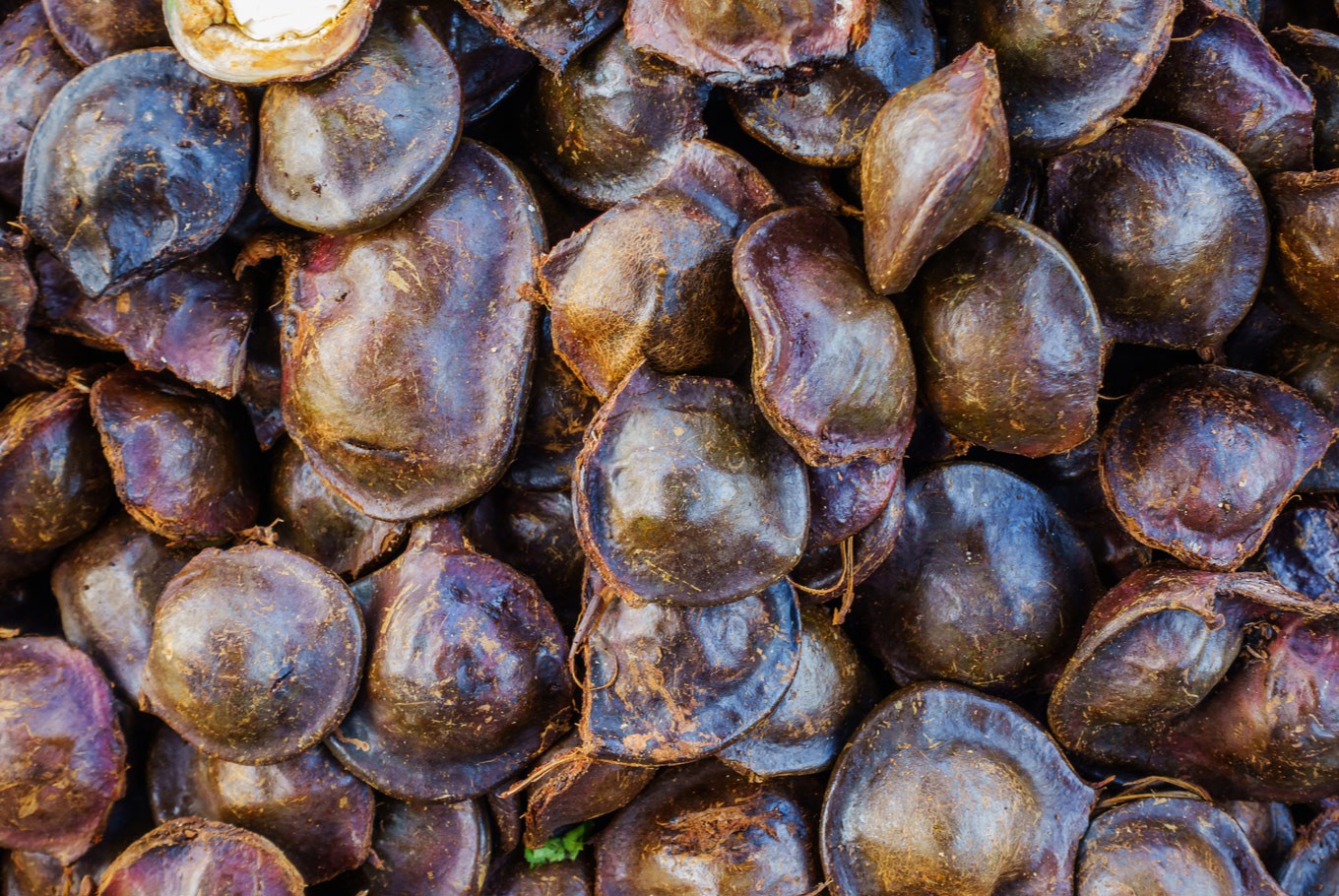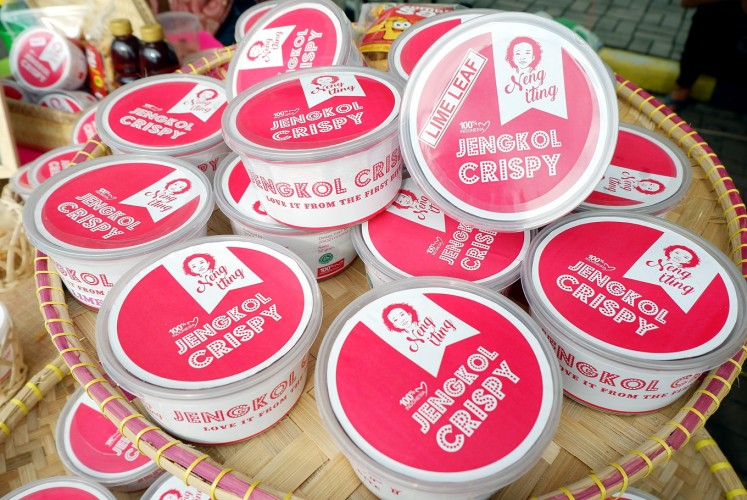Popular Reads
Top Results
Can't find what you're looking for?
View all search resultsPopular Reads
Top Results
Can't find what you're looking for?
View all search resultsMore to 'jengkol' than bad smell
Despite its bad smell, jengkol (dogfruit) deserves attention. Most people have a love-hate relationship when it comes to jengkol.
Change text size
Gift Premium Articles
to Anyone
D
espite its bad smell, jengkol (dogfruit) deserves attention. Most people have a love-hate relationship when it comes to jengkol, but the ingredient’s unique flavor and texture have inspired numerous creations in kitchens across the archipelago.
In Jakarta, Betawi people like to cook dogfruit with spices and soy sauce to make semur jengkol (dogfruit stew). Meanwhile, jengkol balado (dogfruit cooked with spicy chili sauce) is usually the star in warteg (Tegal food stalls) across the capital city.
Afaf Sri Handayani is one of the many die-hard fans of jengkol. For her, semur jengkol is a must-eat side dish to pair with her favorite Betawi food, nasi uduk (steamed rice cooked in coconut milk).
Obsessed with dogfruit, the meatball seller then created bakso jengkol (dogfruit meatballs). As the name suggests, she combined the popular beef dish with the smelly bean, something that her friends initially deemed bizarre.
Afaf introduced her food fusion at the recent Jengkol Festival at BTC Mall in Bekasi, West Java.
“These meatballs are especially made for people who do not like to eat dogfruit,” the 37-year-old said.
Served with a clear broth, yellow noodles and sprinkles of crisp fried onions and fresh parsley, bakso jengkol looks like any meatball soup at a glance, because the jengkol is hidden inside.
The taste was surprisingly delectable. The bitter flavor of the dogfruit was still there, but it was not smelly, thanks to its well-seasoned broth. The composition of the beef and the vegetable was also balanced.
The Jengkol Festival served up other mouth-watering dogfruit dishes, such as burger jengkol (dogfruit burger), katsu jengkol (breaded deep-fried dogfruit), rendang jengkol (dogfruit stewed in coconut milk and spices) and sate jengkol(dogfruit satay).
Afaf said she was aware that many people disliked dogfruit because they were worried it would give them bad breath and unpleasant-smelling urine, but she was confident with her jengkol meatballs because she knew how to treat the ingredients. She said her dish was not smelly, because she soaked the dogfruit in salted water. After marinating it for one night, she boils it with herbs for hours in order to flavor and
soften it.
“Using a mixer, I crush it [the cooked jengkol] into paste,” she said. She then covers the paste with a thick layer of meat dough.
During the festival, some visitors told her that they liked her meaty dish and even asked her to add more dogfruit to strengthen its bitter flavor.
Native to Southeast Asian countries, jengkol is believed to have medicinal properties, such as purifying blood, easing dysentery and preventing diabetes. This bean, however, contains a substance called djenkolic acid, which can disturb the urinary system if consumed excessively. To minimize the risk of negative effects, it is boiled in salted water before being consumed.
Ratna Perdana Wantie, a resident of Bandung in West Java, learned about djenkolic acid when studying chemistry at Padjajaran University.
Her life became different after she embraced jengkol as a business in 2016. She ditched her job as a food safety auditor and developed her own food brand, called Jengkol Neng Iting, which produces dogfruit chips called Jengkol Crispy.
“I want to make people no longer feel shy about eating dogfruit,” she said.
The cooking process to make her chips is simple. The dogfruit is cut into slices and then soaked in slaked lime water for hours to reduce its djenkolic acid. Afterward, it is fried without flour until it becomes crunchy.
Ratna, who initially thought the chips would only appeal to the local market, proudly said she had exported the snack to South Korea and Taiwan. At home, she cooks 10 kilograms of dogfruit every day and produces over 300 cups of Jengkol Crispy every week.
Food writer and historian Fadly Rahman said that today, people openly express their love for dogfruit. The Padjajaran University lecturer said native Indonesians already loved dogfruit long before independence.
Renowned Malayan writer Abdullah bin Abdulkadir Munsyi wrote in his notes that dogfruit was an important commodity in the early 19th century and was available in traditional markets in Sumatra. Munsyi said local elites refused to admit their penchant for dogfruit publicly and tended to eat it in secrecy.
“At that time, dogfruit was deemed to be [ordinary] people’s food,” said the writer of Jejak Rasa Nusantara: Sejarah Masakan Indonesia (Archipelago Flavor Trail: History of Indonesian Food).
Fadly is optimistic that one day, dogfruit-made products can be globally accepted like tempeh. He hopes that people will be more creative in processing it to reduce or remove its bad smell.












